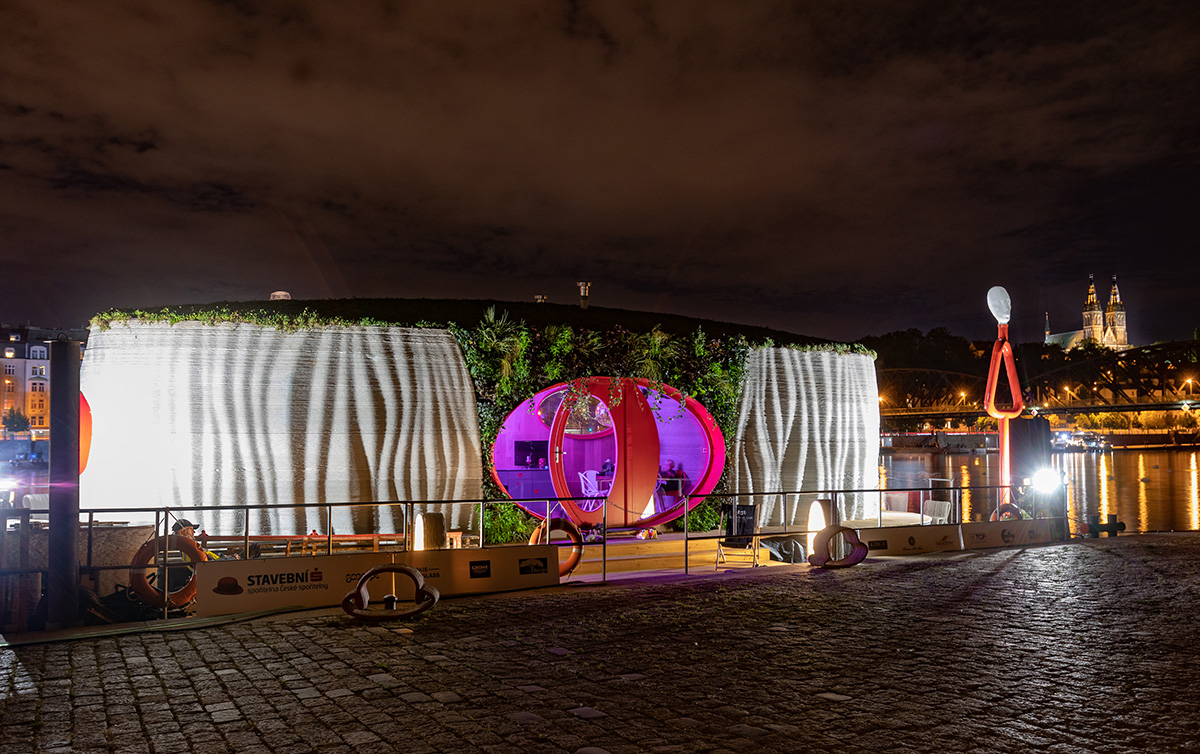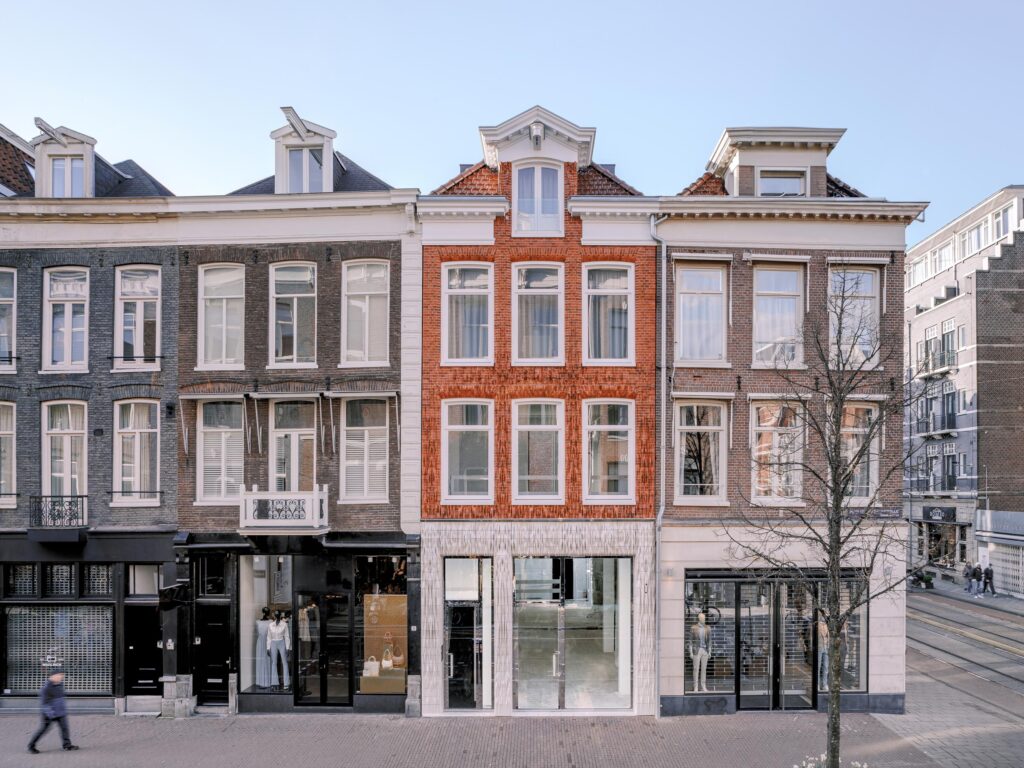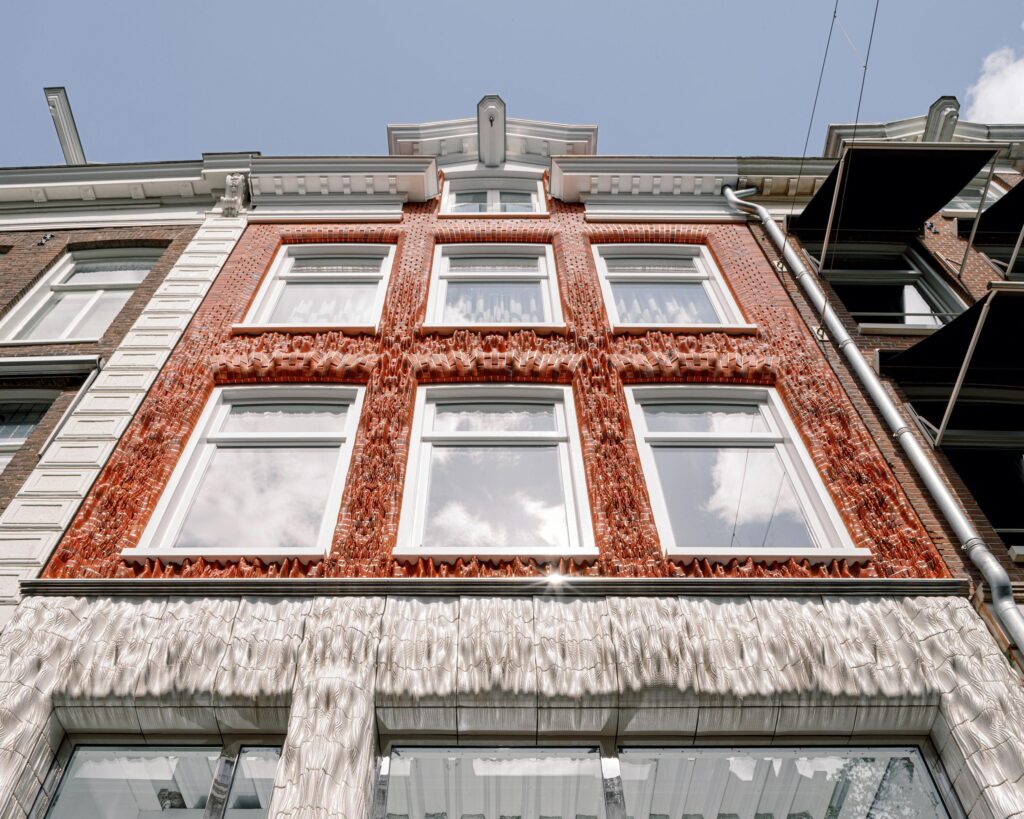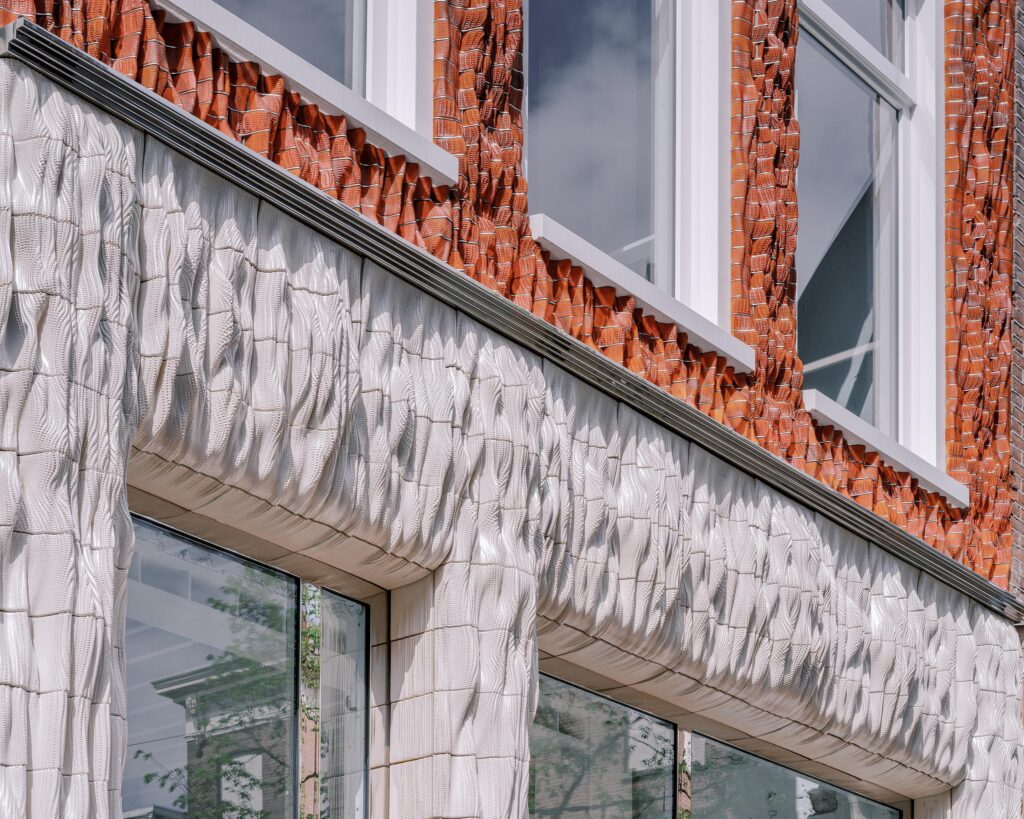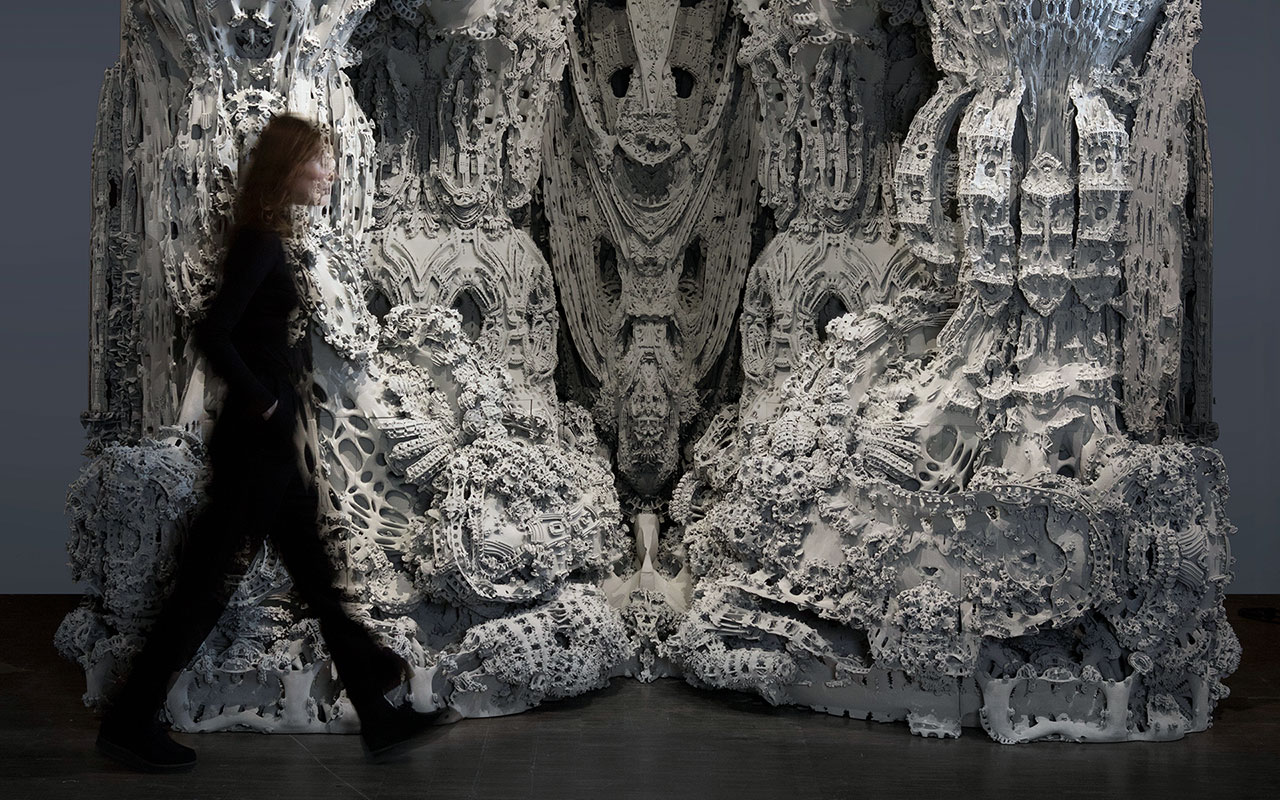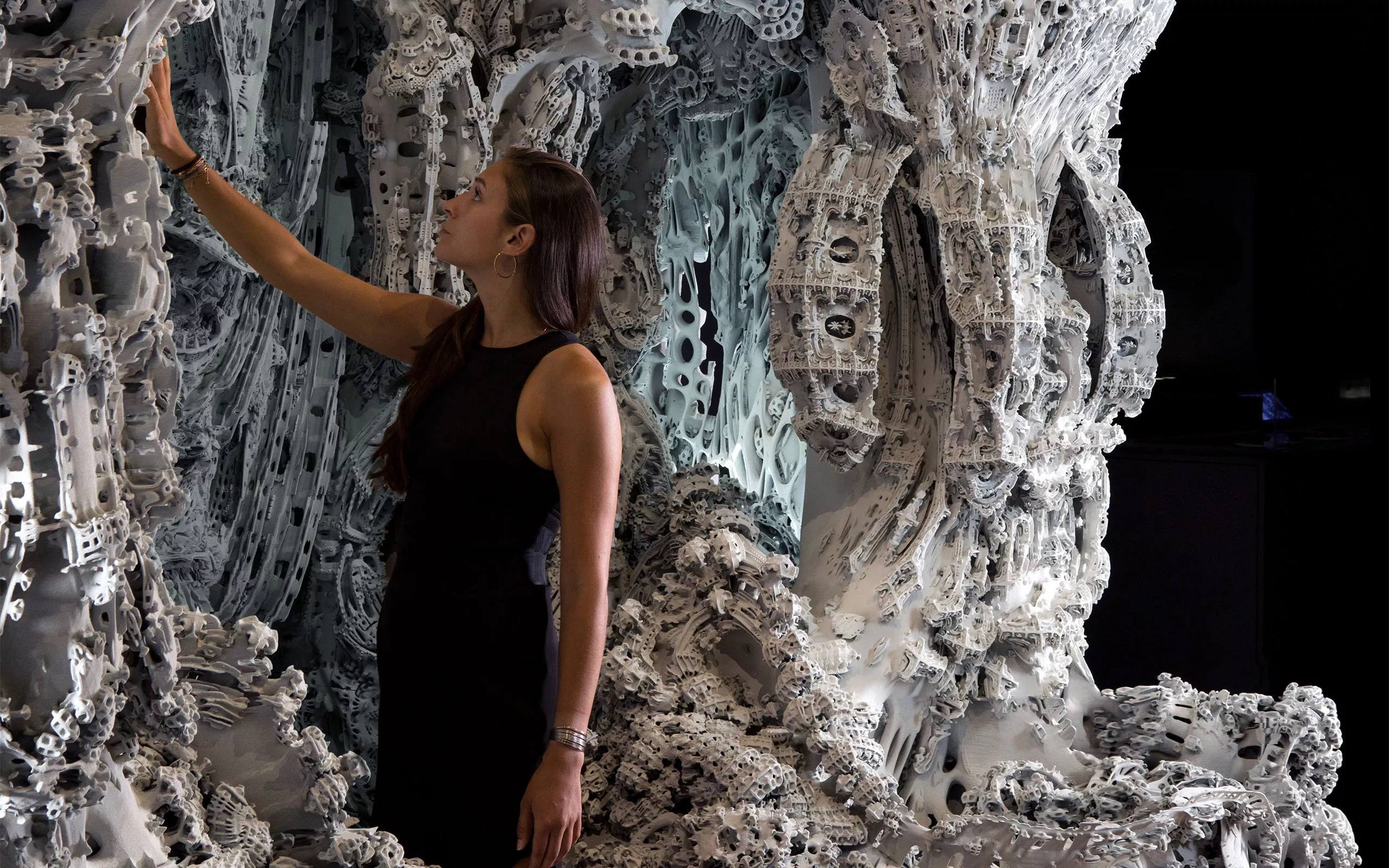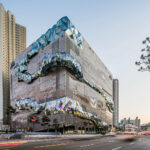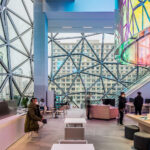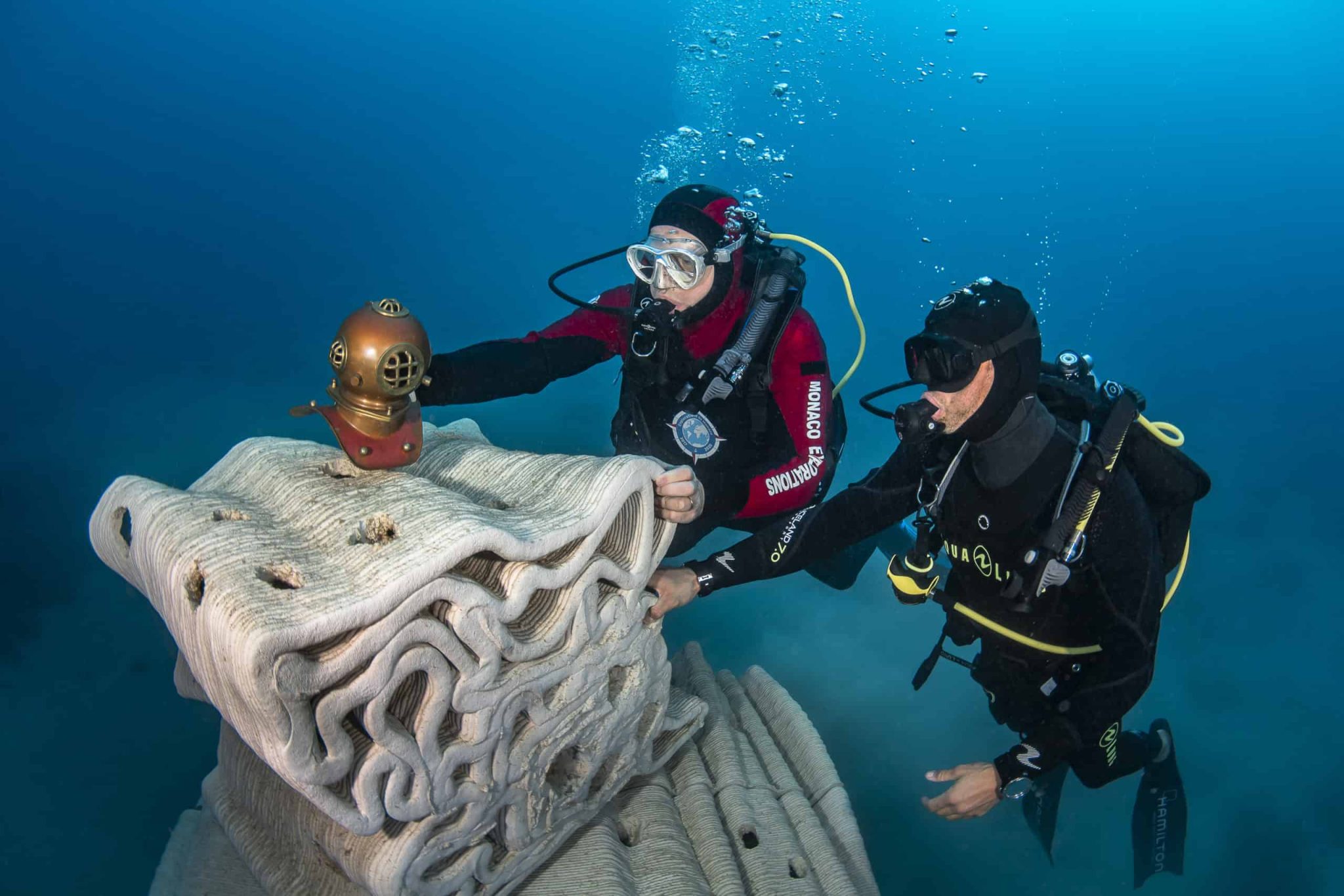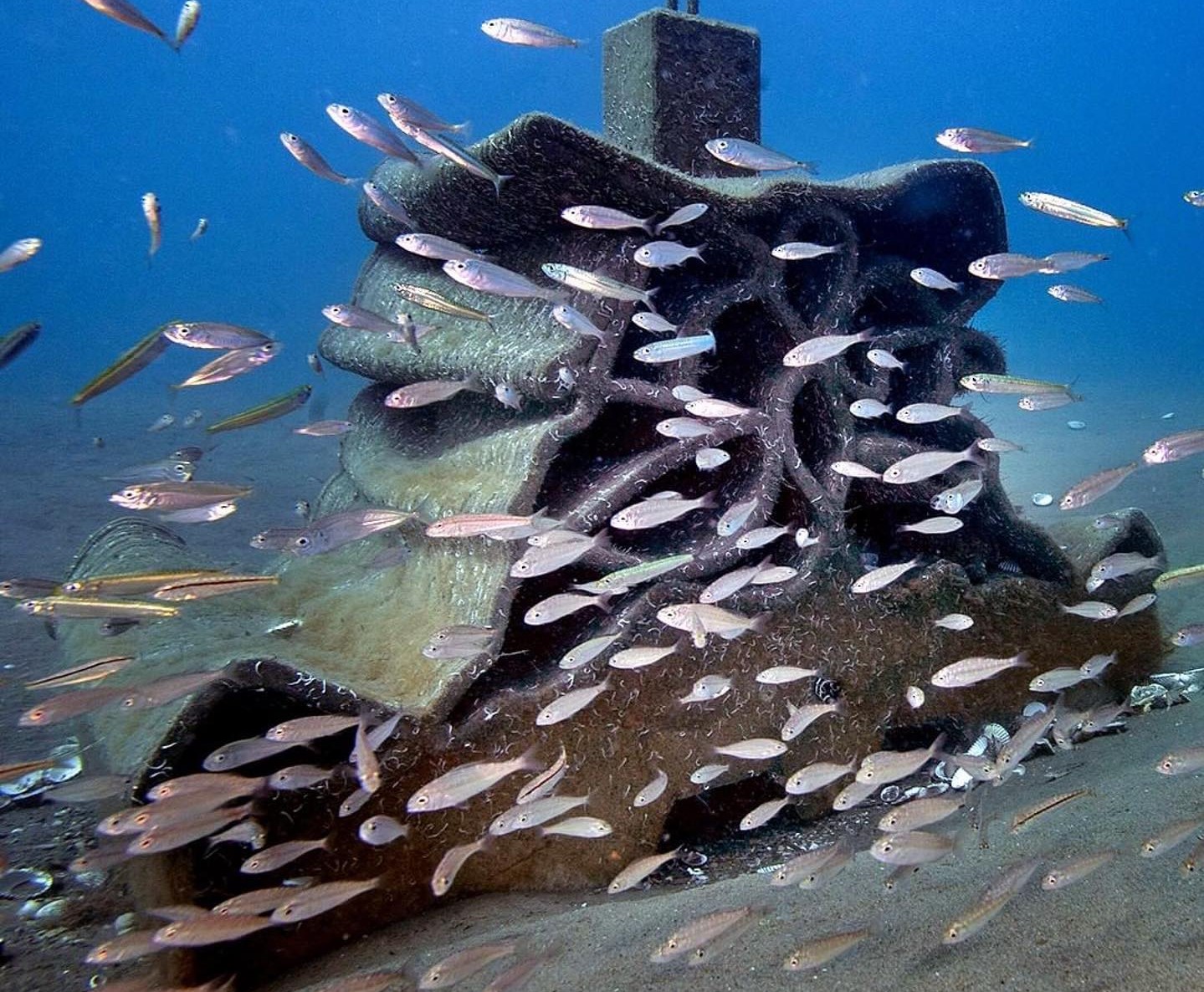In a world where innovation meets necessity, 3D printing in architecture stands out as a fresh frontier of impressive creations. These ten projects show the potential of 3D printing to create structures that are not only visually stunning but also pioneering in sustainability and design. With its originality, each project is carving out a niche in the architectural world, setting new standards for what’s possible in construction and design. As these projects pave the way, they offer a glimpse into a future where architecture can be more adaptable, environmentally sustainable, and creative, proving that one of 3D printing’s most innovative uses could be creating the places where we live, work and explore.
Floating Innovation
Three years ago, sculptor Michal Trpák and his team of architects from the Faculty of Architecture at the Czech Technical University in Prague created a prototype of a 3D printed house floating on a pontoon. The experimental structure, including its partitions, was printed in 22 hours, and used 17 tons of concrete mixture. Dubbed the Prvok, the house was crafted with a robotic arm that prints at a speed of 15 centimeters per second. A Czech innovation from the workshop of Trpak’s other initiative, Scoolpt, the robot was programmed to print concrete. Since Scoolpt is a collaboration with BASF’s original company, Master Builders Solutions (later sold to specialty chemicals company Sika), it printed a newly developed concrete mixture enriched with nano-polypropylene fibers, plasticizers that improve plasticity and produce better organic shapes and a setting accelerator. All in all, this dreamy nook has sparked plenty of interest as a unique living space.
Structural Elegance
In Spain, a pedestrian bridge inspired by the famous works of Antoni Gaudí represents a unique example of how 3D printing technology is revolutionizing traditional construction methods. Crafted with 3D printed concrete by the Institute of Advanced Architecture of Catalonia, this bridge reflects Gaudí’s signature organic architectural style and blends natural beauty with structural creativity. Characterized by what the art world has often described as innovative, organic, and surreal, this bridge draws on Gaudi’s characteristic blend of Gothic and Art Nouveau forms and intricate mosaics. The project uses 3D printing to layer concrete, allowing for the creation of complex, flowing shapes that would be otherwise hard to achieve with traditional building techniques. Adding a layer of sustainability, the concrete mix used here is designed to minimize waste and reduce the environmental footprint of construction.
The bridge, made up of eight separate 3D-printed parts, spans 40 feet (12 meters) and measures 5.7 feet (1.75 meters) wide. It was installed at Castilla-La Mancha in Alcobendas, a park in central Madrid. More than just a bridge, this architectural beauty proves how far 3D printing can stretch the imagination.
Compact Living
DUS Architects designed a small urban retreat to explore how 3D printing could be used in urban spaces. Entirely 3D printed using the in-house 3D printing fused deposition modeling technology developed by DUS’s 3D Print Living Lab unit, the Urban Cabin was built with black-colored sustainable bio-based filament, which the architects have been developing with Henkel. At only 86 square feet (or 8 square meters), this cabin in Amsterdam showcases different types of façade ornament, form-optimization techniques, and smart solutions for insulation and material consumption. Inside, it has enough space for a small sleeping area, with a bed that can be put away anytime. The floor and stepped porch are combined with a concrete finish that makes for a visually stunning pattern that extends into the pocket park. In the green area around the house, the architects added a sculptural outdoor 3D printed bathtub. Finished in 2016, the cabin became immediately available for short-term lets; however, once it becomes obsolete, everything can be repurposed as new 3D printing material.
Façade Revolution
Also in Amsterdam, the Dutch firm Studio RAP completed the Ceramic House project in 2023, located on the iconic high-end P.C. Hooftstraat shopping street. Using its bespoke 3D printing technology, the studio has transformed the outside of a boutique, combining the neighborhood’s traditional brick architecture with cutting-edge technology. Known for tackling some of the most challenging architectural feats, Studio RAP has outdone itself this time. To create the shiny, wavy ceramic pieces that dress the façade, the studio 3D printed ceramic materials were artisanally glazed by the Dutch pottery company Royal Tichelaar.
At street level, the façade features large 3D printed ceramic tiles, approximately 40 x 20 cm each, glazed in pearl white. On the higher floors, the building façade showcases 3D printed bricks glazed in three distinct shades of red. The bricks are composed alongside the original masonry cross bond and have abstract ornamentation that fades as they travel higher. These bricks are put into laser-cut stainless steel cassettes, referring to the original flushes. The result is stunning from every angle, meshing perfectly with the cultural character of the area, making it a true reflection of the site’s unique charm and sophistication.
- Studio RAP’s Ceramic House. Image courtesy of Studio RAP.
- Studio RAP’s Ceramic House in Amsterdam. Image courtesy of Studio RAP.
- Studio RAP’s Ceramic House. Image courtesy of Studio RAP.
- 3D printed ceramic tiles for the Ceramic House in Amsterdam. Image courtesy of Studio RAP.
Cultural Fusion
Architects Kei Atsumi and Nicholas Preaud took their groundbreaking vision to life with their Tsuginote Tea House at the Kanazawa Shrine in Japan. This architectural gem, composed of over 900 unique 3D printed pieces, aims to redefine world-renowned ancestral Japanese joinery (wood joining) with 3D printing technology and find new sustainable uses for discarded wood materials. With its double-curved design, each piece was crafted using wood-based PLA filament on Flashforge’s Guider II and III printers. By meshing traditional Japanese joinery techniques with 3D printing, the architects suggest a new direction for “freeform structure assembly and fabrication,” basically, each of these parts can be assembled by anyone without prior construction knowledge and any tools or metal fittings. This revolutionary technique is a beautiful creation that offers new ways to think about building and design and offers an interesting direction for the future of small-scale architecture.
Sculptural Marvel
Working at the intersection of architecture, digital fabrication, and computational design, Benjamin Dillenburger and Michael Hansmeyer push the boundaries of aesthetically unique creations. Among their many projects, one full-scale 3D printed grotto crafted from seven tons of sandstone is among the most eye-catching pieces they have created. Commissioned by the Centre Pompidou in Paris, the grotto showcases an exceptional level of detail and complexity, offering a vivid example of how 3D printing can be leveraged to create spaces that are not only visually stunning but also evoke a profound architectural experience. By blending traditional materials like sandstone with 3D printing techniques, Dillenburger and Hansmeyer have produced a work that challenges conventional craftsmanship.
“Digital Grotesque II is a testament to and celebration of a new kind of architecture that leaves behind traditional paradigms of rationalization and standardization and instead emphasizes the viewer’s perception, evoking marvel, curiosity and bewilderment,” said Dillenburger and Hansmeyer.
Generated algorithmically from 156 gigabytes of data and after two years of design development, Digital Grotesque II comprises 1.35 million surfaces, forming the printed sandstone. A secondary algorithm helped create the grotto’s porous and layered quality, which helps create a cavern-like structure. Printed in only one month, the grotto demanded two days for assembly. With all of its ornamental details and organic forms, the structure reaches a height of roughly 12 feet (3.5 meters).
Architectural Mastery
Galleria Gwanggyo in South Korea shows off what 3D printing can do for buildings. This shopping center in Gwanggyon stands out with its modern façade, blending mosaic stone with intricate glasswork. It is all kept in place by special joint nodes that were a puzzle to design and make but relied on voxeljet’s 3D printers. For this project, Korean architectural firm WITHWORKS realized immediately that the uniqueness of each node made it impossible for the architects to produce a separate tool for each, as the cost would have been prohibitive, so it hired KTC, a South Korean-based and long-standing partner of voxeljet, specialized in the production of sand molds and investment casting models. Equipped with a VX800 and a VX2000 for 3D printing PMMA models, KTC has the technology and the capacity to 3D print large-format investment casting models in one piece. All 230 joint nodes could be printed, cast, and installed within four months. The result is an architectural masterpiece that impresses both the outside and the inside, and once again, it shows what is possible for architects today with the help of 3D printing.
- Galleria Department Store Gwanggyo in South Korea. Image courtesy of Galleria Stores.
- Galleria Department Store Gwanggyo in South Korea. Image courtesy of Galleria Stores.
Light and Form
Designed by 3F Studio, the 3D printed façade for the new entrance of the Deutsches Museum in Munich, Germany, marks a significant advance in architectural design and technology. Originating from the “Fluid Morphology” research project at the Technical University of Munich, 3F Studio, a German-based startup founded by Moritz Mungenast, Oliver Tessin, and Luc Morroni, has created a multifunctional and translucent façade application with 3D printing.
Already in place at the museum’s new entrance, this façade is not just an architectural marvel for its aesthetic appeal but also its innovative use of materials and technology. Thanks to the translucent nature of the façade, it can manipulate natural light creatively, contributing to light inside the building and reducing the need for artificial lighting. Moreover, the multifunctional aspect of the design suggests that it could offer additional benefits, such as improved insulation or ventilation.
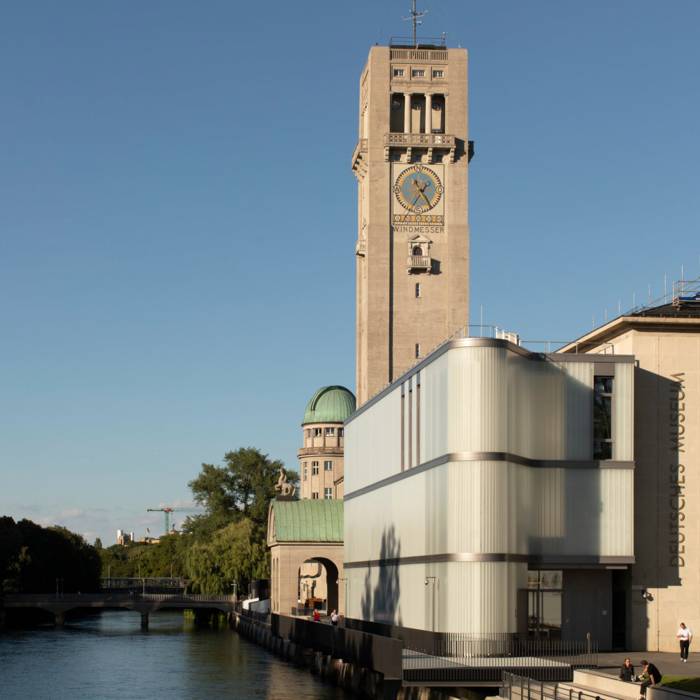
3D printed façade for the new entrance of the Deutsches Museum in Munich, Germany. Image. courtesy of the Deutsches Museum.
Futuristic Gateway
Serving as the East Gate of the Happy Valley Theme Park in Jiangsu, China, the Nanjing Pavilion was designed by Archi-Union Architects and Shanghai-based high-tech company Fab Union. This customized installation guides visitors from the front plaza to the theme park’s major attractions. Its design is rooted in multi-dimensional hyperbolic surfaces derived from computational geometry. It exhibits an intricate interaction between the external and internal spaces, as it seems to fold from one to the other, begging the question, are there real boundaries to this building?

The Nanjing Pavilion of Happy Valley Theme Park East Gate. Image courtesy of Archi-Union Architects.
Stretching 170 feet (52 meters) long and 85 feet (26 meters) wide, with a projection area of 14,552 square feet (1,352 square meters) and an unfolded surface area of 20,989 square feet (1,950 square meters), the structure is supported by a steel skeleton and covered with a 3D printed plastic construction system, which has an overhang span of up to 98 feet (30 meters). It’s comparable in size to three NBA basketball courts laid side by side.
The architects explain that six years of research and development, starting in 2014, behind this project saw the evolution from single-material use to composite modified plastics and from basic component calculations to global finite element analysis. Completing the East Gate in 2020 marked a significant advance in architectural technology and an impactful precedent in mass customization and robotic fabrication.

The Nanjing Pavilion of Happy Valley Theme Park East Gate. Image courtesy of Archi-Union Architects.
Underwater Sanctuary
Underwater, 3D printed architecture also shines as a tool for ecological restoration, with an artificial reef project in Monaco. Honoring the legacy of Albert Falco, an oceanographer closely associated with Jaques Cousteau, this initiative, supported by Prince Albert II of Monaco and diving champion Pierre Frolla, shows the potential of 3D printing in creating underwater sanctuaries. XtreeE and Seaboost have turned to 3D printing to develop habitats specifically designed for local marine species. Designed to foster underwater biodiversity, the reef’s cavities are specially crafted to encourage the growth and population of specific marine species, such as the Grouper, which is crucial for maintaining the ecological balance of the seagrass species Posidonia.
The intricate porous architecture is made possible thanks to XtreeE’s concrete 3D printing technology, which mimics the Coralligenous. This biodiverse Mediterranean habitat naturally takes centuries to form at a fraction of the cost and time. Measuring 953.5 cubic feet (three cubic meters), the reef highlights the adaptability of construction 3D printing in some of the harshest habitats on Earth. However, the project’s ambitious scale and the collaborative effort of partners like ABB Robotics, LafargeHolcim, and Dassault Systems are a great way to support the oceans and the challenges they face today.
Subscribe to Our Email Newsletter
Stay up-to-date on all the latest news from the 3D printing industry and receive information and offers from third party vendors.
You May Also Like
New Report: Semiconductor Industry to See $1.4B in 3D Printing Revenues by 2032
“The semiconductor sector has become the most strategically significant area of global industry.” Truer words are hard to come by when it comes to the modern world, and they are...
Will Photonic-Crystal Lasers Revolutionize 3D Printing?
Powder bed fusion (PBF) for metals and polymers predominantly utilizes lasers as the primary heat source. Some directed energy deposition (DED) technologies also employ lasers, while various vat polymerization methods...
3D Printing Unpeeled: Orbex Investment, IndoMIM and HP, Ultrasonic Waves
INDO-MIM has bought three HP Metal Jet S100 printers, operating two in India and one in Texas. This is a win for HP because the company has deep experience in...
3D Printing Webinar and Event Roundup: April 21, 2024
It’s another busy week of webinars and events, starting with Hannover Messe in Germany and continuing with Metalcasting Congress, Chinaplas, TechBlick’s Innovation Festival, and more. Stratasys continues its advanced training...


